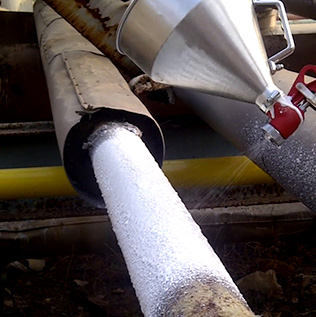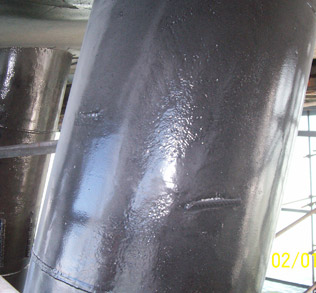Easy Solution for a difficult problem
One of the best and reliable solutions to prevent CUI and CISCC is the use of barrier/protective coating systems between the surface and the insulation.
The Problem
Corrosion under insulation (CUI) is the corrosion of Substrate that occurs beneath insulation as a result of water penetration. Source of water ingress can be from rain water, leakages, steam, or sweating from temperature cycling or low temperature operation such as refrigeration units.
When water vaporizes, supersaturation of salts like Chlorides occurs, thereby accelerating CISCC. There is also a possibility of leaching out of salts from insulation material. Most CISCC failures can commence even at concentration levels of s low as 100 ppm
Product
Product Highlights
- Based on non sacrificial type barrier coatings inorganic hybrid polysiloxanes and multi polymeric composite
- Product based on organic and inorganics which activate at different temperatures
- Recommended in NACE SP0198 -2010
- Uses - Barrier coating under insulations to mitigate Corrosion under insulation (CUI)
- Exposed services to prevent water and electrolytes coming in contact with the substrate
- Cryogenic applications
- Chloride induced stress corrosion cracking (CISCC) of austenitic stainless steel.
- Products with Temperature service range from (-) 185°C to 649°C
- Resistant to thermal shock and thermal cycling
- UV stable
- Custom colour topcoats are available for service up to 538°C
- Ease of mind with improved safety factor
Ease of Application
- Applied to both ambient and hot surfaces
- Easily applied with brush, roll, or spray equipment
- Single component hence no mixing ratios to be taken care of
- Long/indefinite recoat window – Product can be applied over itself
- Surface tolerant, hence product can be applied even when tight adherent rust is present on the asset. Blast cleaning can be avoided
Hassle free Repairs and Maintenance
Damaged coatings can be easily repaired with minimal surface preparation effort required
The Problem
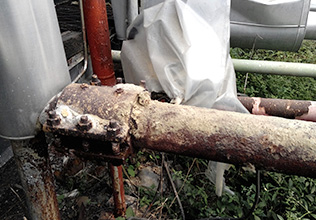 Water tends to enter the insulation, thereby increasing possibilities of CUI. Water in insulation also increases conductivity and leaches out contaminants from the insulation material. Once the water is absorbed by the insulation, wicking effect is encountered. This increases annular space between the asset and insulation, thereby increasing heat loss.
Water tends to enter the insulation, thereby increasing possibilities of CUI. Water in insulation also increases conductivity and leaches out contaminants from the insulation material. Once the water is absorbed by the insulation, wicking effect is encountered. This increases annular space between the asset and insulation, thereby increasing heat loss.
No isolation can be leak proof. It is also a difficult to insulate difficult geometries like beds, elbows, valves, Flanges, etc on an asset.
The Solution
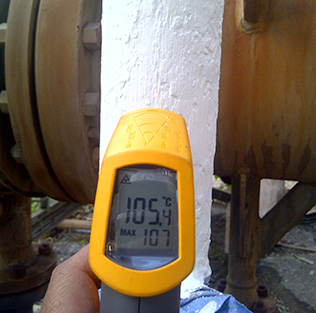 Liquid spray applied insulating coatings or Thermal interface coatings are Thermal Barrier Coatings that act as heat retardant or insulation. The main function of insulation is the reduction of heat loss, contributing to the reduction of energy consumption and thus cost savings. These coatings have extremely low lambda value, hence are good insulators. The lower the thermal conductivity, the less conductive the material and the better the insulation.
Liquid spray applied insulating coatings or Thermal interface coatings are Thermal Barrier Coatings that act as heat retardant or insulation. The main function of insulation is the reduction of heat loss, contributing to the reduction of energy consumption and thus cost savings. These coatings have extremely low lambda value, hence are good insulators. The lower the thermal conductivity, the less conductive the material and the better the insulation.
Product Highlights
- Product Complies to ASTM C 1055 - Standard Guide for Heated System Surface Condition that Produce Contact Burn Injuries.” The established acceptable limit for contact exposure in an industrial environmental is 5 seconds
- Extremely low Thermal conductivity
- Wide range of working temperature (-60 to +200)
- Water based coating designed on nanotechnology
- Ceramic spheres in acrylic emulsion
- Fireproof
- Anti-corrosive
- Vapour retardant
- Can be applied on hot surfaces, hence shut downs can be avoided
- Can be applied on various Material of constructions
- Suitable for new or rusted surfaces
- Anti-corrosive
- Adequate adhesion
- Substantial Energy Savings
Ease of Application
- Applied to both ambient and hot surfaces
- Easily applied with brush, roll, or spray equipment
- Single component hence no mixing ratios to be taken care of
- High build product applied in a single coat, wet on wet application.
- Surface tolerant, hence product can be applied even when tight adherent rust is present on the asset. Blast cleaning can be avoided
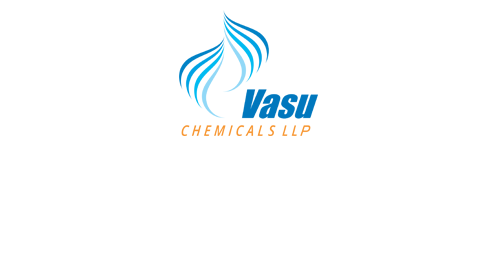



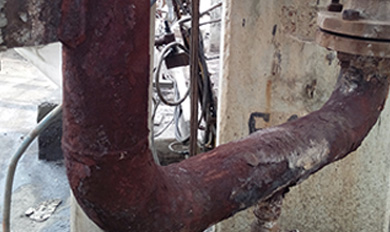
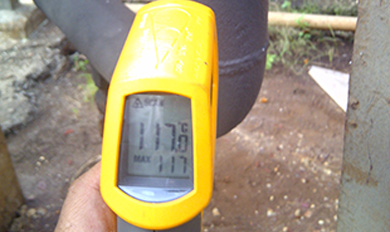

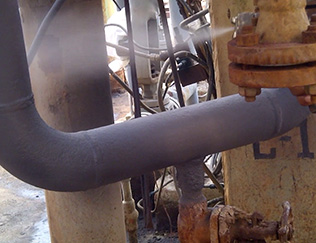
 Water tends to enter the insulation, thereby increasing possibilities of CUI. Water in insulation also increases conductivity and leaches out contaminants from the insulation material. Once the water is absorbed by the insulation, wicking effect is encountered. This increases annular space between the asset and insulation, thereby increasing heat loss.
Water tends to enter the insulation, thereby increasing possibilities of CUI. Water in insulation also increases conductivity and leaches out contaminants from the insulation material. Once the water is absorbed by the insulation, wicking effect is encountered. This increases annular space between the asset and insulation, thereby increasing heat loss.  Liquid spray applied insulating coatings or Thermal interface coatings are Thermal Barrier Coatings that act as heat retardant or insulation. The main function of insulation is the reduction of heat loss, contributing to the reduction of energy consumption and thus cost savings. These coatings have extremely low lambda value, hence are good insulators. The lower the thermal conductivity, the less conductive the material and the better the insulation.
Liquid spray applied insulating coatings or Thermal interface coatings are Thermal Barrier Coatings that act as heat retardant or insulation. The main function of insulation is the reduction of heat loss, contributing to the reduction of energy consumption and thus cost savings. These coatings have extremely low lambda value, hence are good insulators. The lower the thermal conductivity, the less conductive the material and the better the insulation. 